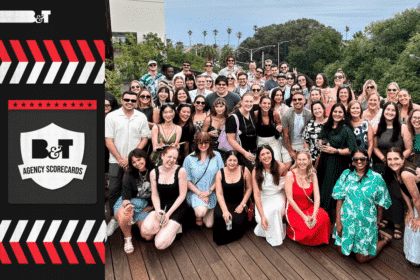2012 was a year that will go down in history for The Campaign Palace – as the year of its demise.
The iconic 40-year-old Australian agency shut up shop for the final time in June, calling time on a suffocating few years of client losses and staff departures.
JWT assumed operations of The Campaign Palace, a fellow WPP agency, moving staff and clients to JWT’s Sydney office. The Campaign Palace’s seven Melbourne-based staff were integrated into WPP’s Y&R Group in Melbourne’s Collins Street.
At the time, JWT’s chief executive for Australia and New Zealand, John Gutteridge, said: “This move is designed to give Palace clients and staff the benefit of added resources to continue to deliver the exceptional work and results that the Palace has long been renowned for. There was a need for greater resources to be available to Palace operations and, with no conflicting clients, moving into JWT makes perfect sense.
“We have nothing but respect and admiration for the role the Palace has played over the years in shaping the Australian advertising landscape and we are very much looking forward to working with both their clients and staff.”
And shape the Aussie ad landscape it did. The Campaign Palace, which was founded in Melbourne by Lionel Hunt and Gordon Trembath, was responsible for some of the most memorable ads to hit TV screens Down Under over the past four decades.
Its early work, including ‘Isaac Newton’ for Holeproof’s Computer Socks commercial and ‘Alligators’ for Apple went down as greats.
More recent, the agency was credited with turning round the fortunes of Meat and Livestock Australia with ads such as the spot that saw butchers swap their carving knives for dancing shoes and take to the streets. And it brought tears to parents’ eyes with the ‘Separation’ spot for Quit, which showed a little boy crying at the station after losing his mum.
Perhaps its most iconic – and controversial – work, however, was the Antz Pantz ‘Sic Em Rex’ spot with the echidna.
The Palace also became a training ground for some of adland’s best. Author Peter Carey, creative director Jack Vaughan, Big Red’s Ted Horton, Whybin\TBWA chairman Scott Whybin and BMF co-founder Matthew Melhuish all earned their stripes there.
But the agency fell upon tough times. It lost a string of high-profile clients, including Target, Domino’s, Bonds and Westpac.
Following the downturn, Y&R’s global boss David Stable said last year that he was “ashamed” of the way The Campaign Palace’s reputation had been allowed to slip – although he pledged it still had a future.
“Shame on them that they lost business,” he told B&T. “Shame on us that we allowed it to slip and we are just not going to allow it anymore.”
On top of client losses, the final straw was former executive creative director Paul Fishlock’s decision to sue the agency last year. Fishlock left the Palace in 1996 to found BMF, then rejoined the Palace in 2004 as chairman and executive creative director. He left in February 2011 after discovering, through trade press that the agency had hired Leo Burnett Chicago’s Reed Collins to replace him.
The Campaign Palace’s closure was mourned in adland.
18 Feet & Rising chief executive Ben Colman, who was group account director at the Palace from 1995 to 1999, said: “It’s a very sad day for advertising. The industry has yet to see its equal emerge. Great campaigns at the Palace were a weekly occasion, the quality of the creative was just amazing.”
But its demise was also seen as inevitable. Al Crawford, executive planning director at Clemenger BBDO Sydney, said: “From the outside looking in, you just know this was a management merry-go-round. The Fishlock thing, in some ways, was the icing on the cake. That just signaled an agency that was destroying itself from within.”
Colin Wilson-Brown, former chairman of the Advertising Federation of Australia who runs pitch consultancy The Clinic, outlined how a series of issues led to the Palace’s downfall. He said: “In the 1980s The Campaign Palace was the high church of Australian advertising. The agency had more creative people than most other agencies put together. ‘Creatively-led’ would be an understatement.
“And then they sold to Patts, who sold to Bates, who sold to Cordiant, who sold to PEP, who sold to Y&R, who sold to WPP.
“It was pass the parcel. The Palace had no strategic importance for its new owners. It was part of no network, it had no international clients. And the legends left, many going on to great success elsewhere.
“The most important lessons is how difficult it is to transition a creative business from the founders to the next generation. The DNA changes. Where once the numbers were a consequence of great work, now the numbers become the goal.”
The final work from The Campaign Palace hit our screens in October. The series of spots for the NSW Rural Fire Service showed people going about their daily routines while their property burns around them, putting the spotlight on the importance of bush fire survival plans.








